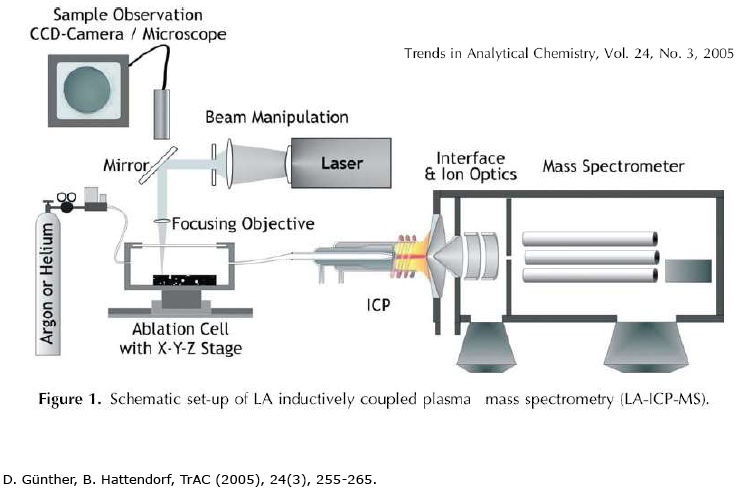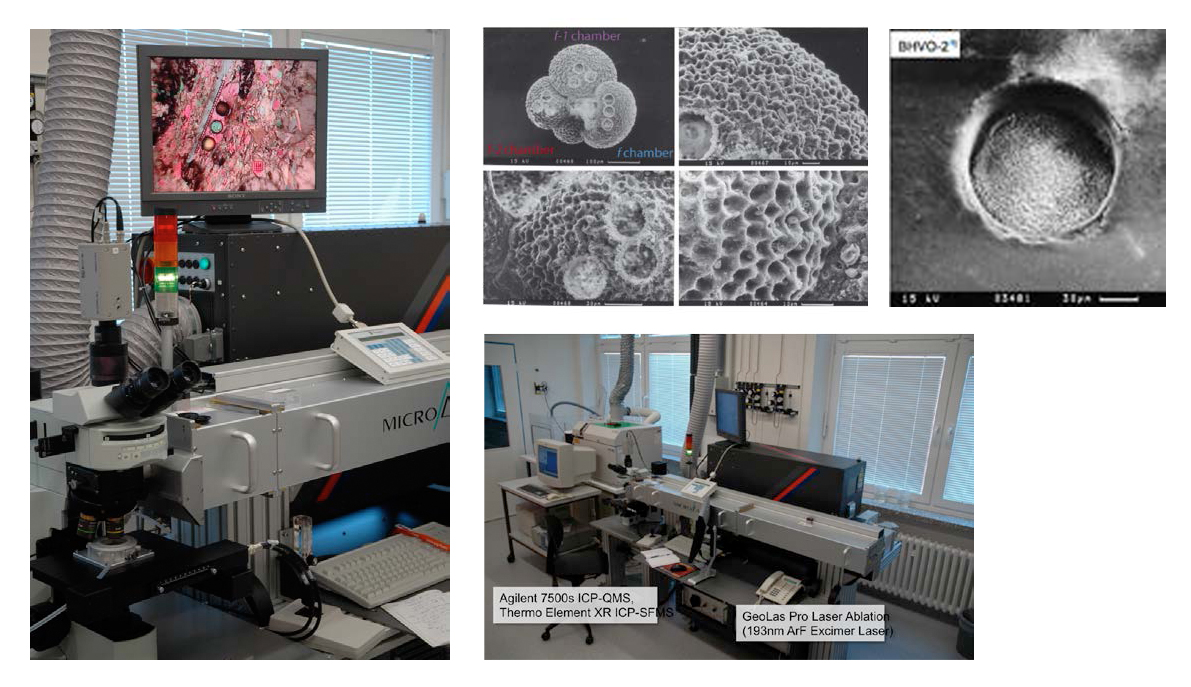COHERENT GeoLasPro Plus 193nm ArF excimer laser ablation (LA)
Instrument
High energy 193nm ArF excimer laser ablation system
Technical Data/Features
- beam homogenization, aperture imaging optics, 2-200?m spot size
- high output fluence up to 40 J/cm2
- 1-20Hz laser pulse frequency
- standard OLYMPUS petrographic polarizing transmitted or reflected light microscope
- automated analysis of pre-programmed target points
- Simultaneous determination of 45 trace and ultra-trace elements in volcanic glass, melt inclusions in minerals, individual minerals in petrographic thin sections and their compositional zonation
- Age dating of individual minerals / mineral zonation
- Elemental ratios as paleo proxies in bio-carbonate (forams, corals, shells etc.)
- Bulk analysis of materials, and of nano-particulate pressed powder pellets
- Elemental mapping of archaeological (bones, teeth), biological (tree rings), medical samples
Laser ablation à inductively coupled plasma mass spectrometry (LA-ICP-MS) is a fast and very sensitive method for the direct in situ multi-element analysis of solid samples with high spatial resolution down to 4-40 ?m. The sample is transferred into a sealed ablation cell with UV-transparent window on its upper side. The ablation cell is mounted onto a motorized x,y,z-microscope stage. The sample target can be observed by video or binocular using a standard petrographic polarized light microscope in either transmitted or reflected light. A pulsed high energy laser beam @ 193nm with a fluence of 1-40 J/cm2 is focused onto the sample surface and vaporizes the sample @ T>20.000K within typical crater sizes of 20-90?m. The vaporized material re-condenses forming a particulate sample aerosol that is transported by a He carrier gas stream into the ICP-MS. The He gas stream with typically 1L/min is directed through the ablation cell and subsequently mixed with Ar prior to entering the ICP. Further addition of H2 reduces oxide interferences and enhances sensitivity. The ionisation and subsequent multi-element analysis of the ablated material happens in the coupled ICP-MS as described above for the AGILENT 7500cs ICP-MS instrument. Interferences caused by non-stoichiometric sampling and elemental fractionation during laser ablation and ionisation in the ICP as well as formation of polyatomic ions in the ICP-MS depend on operating parameters of the entire system and must be carefully optimized. The system allows for single point analysis or ablation of point matrices and lines. Virtually no sample preparation is required but samples must fit into the available ablation cells. Polished sample surfaces, however, allow for better microscopic identification of the target. Detection limits are typically in the low ppb range with external error of 1-5% for analytical results.
In near future, the laser ablation system will be coupled to the new THERMO Element XR high resolution ICP-MS instrument (see below).
Applications
This hyphenated analytical technique LA-ICP-MS is routinely used for the in situ microanalysis of solid materials. Major routine application fields are:
Keywords
Laser, Mass Spectrometry, Isotope and Trace Element Analysis, Materials Analysis, in situ Micro Analysis

